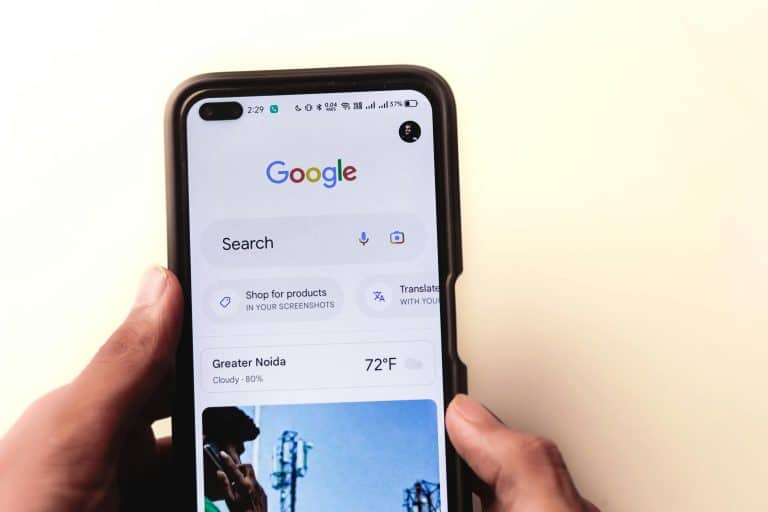What are you going to do with a sleek, responsive website, but your audience can’t find it? It’s like putting a billboard on a deserted road. And what good is a search optimized website if your audience grows frustrated by clunky navigation or slow load time? Your visitors will not stick around. To succeed in this highly competitive online landscape, web design and SEO need to seamlessly work together.
As Hostinger points out, strong website design improves navigation, speed, and user experience. These factors will keep your audience engaged longer, boosting your search rankings and driving both traffic and conversions. That said, an SEO-friendly website design is a must-have for growth.
Here, we’ll discuss why design and SEO are two sides of the same coin, the elements that matter most in ranking, as well as the common pitfalls to avoid.
Why You Can’t Have a Good Web Design Without SEO
Imagine placing a billboard in the desert, do you think many people will see it? No matter how gorgeous the billboard is, if no one is finding it, your efforts will be in vain. It’s the same with creating a gorgeous website design but not investing in SEO.
SEO drives visitors to your site, while good site design ensures they are engaged enough to keep exploring and taking action. To achieve this balance, businesses shouldn’t treat design and SEO as separate strategies.
What is the Connection Between Web Design and SEO?
It’s no surprise that when it comes to wanting to stand out online, most businesses focus on the website’s aesthetics. But the reality? Website design should work together seamlessly with SEO. Search engines, like Google, will evaluate your site’s layout, responsiveness, speed, as well as structure when interpreting and ranking it.
So, if it looks sloppy and clunky, both users and search engines will not spend time figuring out what your content is about. In fact, Google rewards websites that are fast, mobile-friendly, and easy to navigate.
Key design elements search engines evaluate:
- Mobile responsiveness: Your site must seamlessly adjust to different screen sizes
- Site speed: Make sure your site loads quickly by optimizing images, scripts, and hosting.
- Navigation and structure: Easily guide your visitors around your website through clear menus and internal linking. This is also essential for easy crawling.
Ultimately, the web design and SEO relationship is built on smart technical choices. Note that every design decision can make or break your website’s ability to rank and convert.
Key Web Design Elements That Impact SEO
Mobile-Responsive Website Design and SEO
As previously mentioned, Google prioritizes websites that are mobile-friendly. And for good reason. According to recent statistics, 63% of search traffic in the US alone comes from mobile devices. So if your site fails to seamlessly adapt to different screen sizes, you risk losing both rankings and visitors.
So what makes a website responsive?
- Your site must look great on desktops, tablets, and phones.
- Your visitors don’t need to pinch, zoom, or endlessly scroll through your pages
- Your visitors can easily browse and interact on any device
Website Speed
Speed isn’t just “nice-to-have”; it’s crucial in ranking as well. Google prioritizes sites that load quickly because slow ones will only frustrate users. You can use tools, such as PageSpeed Insights and GTmetrix to reveal how images, scripts, and server choices affect your site’s performance.
A fast-loading website doesn’t just rise in ranking but also keeps visitors engaged.
Navigation and Site Structure for SEO
Site structure is more than your site’s aesthetics. Aside from guiding your visitors where they want to go, it also helps search engines understand what your website is about. That said, well-organized menus, internal links, and breadcrumbs serve as a roadmap for search engine crawlers.
From your visitor’s point of view, intuitive navigation lowers frustration and encourages further exploration. Poor structure, however, will lead to higher bounce rates and lost opportunities.
Here are a few must-haves for web design and SEO success:
- Use a mobile-friendly and responsive framework
- Compress and optimize images for faster loading
- Minimize scripts and leverage caching
- Create clear and structure menus with logical categories
- Add breadcrumbs and internal linking for crawlability
On-Page SEO and Web Design: Site that Search Engines (and People) Love
Ready to achieve great rankings? Don’t just focus on one strategy; instead, make sure that on-page SEO and web design work together.
Here are a few must-haves in each of your pages:
- Headings (H1s and H2s) signal hierarchy and make content easy to scan
- Metadata defines what each page is about
- Schema markup gives search engines deeper content about your content
These elements create an SEO-friendly website structure that is easy to crawl and rank. Aside from these elements, you should also pay attention to typography, spacing, and having a clean layout. These improve readability, encouraging readers to stick around.
Additionally, make sure to add keywords in titles, content, and image alt texts for keyword-optimized web pages. Stay away from creating a wall of text overstuffed with keywords — these push readers away.

Common Web Design Mistakes that Hurt SEO
What else drives visitors away?
Even the most aesthetically pleasing and trendy-looking websites can underperform if essential SEO factors are overlooked. Here are a few of the most common web design mistakes for SEO that will cost you traffic and rankings:
- Overusing animations and flashy design: These may look trendy and impressive, but excessive effects will slow down loading times and distract visitors from your content.
- Heavy, uncompressed media: Using large images and video files will take a toll on your site’s performance. This is one of the pitfalls in web design that hurts SEO, rankings, and user experience.
- Poor mobile optimization: As previously emphasized, Google prioritizes mobile-friendly websites. If your site isn’t optimized, you’ll lose visibility and frustrate visitors.
- Keyword-less content in visuals: Did you know that search engines can’t “see” images? That’s why you need to add descriptive alt text. Missing keywords in images means missing opportunities to rank.
Final Thoughts
Avoid the common mistake of treating web design and SEO as separate strategies. They are both essential in your online success formula. When you have a fast, mobile-friendly website that is structured for both users and search engines, you can visibility and keeps users engaged. That said, align web design and SEO right from the beginning to set the stage for a site that looks great and also drives measurable business growth.
Want a website that looks great and performs even better? At Pascual Creative, we design SEO-friendly sites that look stunning and drive measurable results. Let’s talk!



